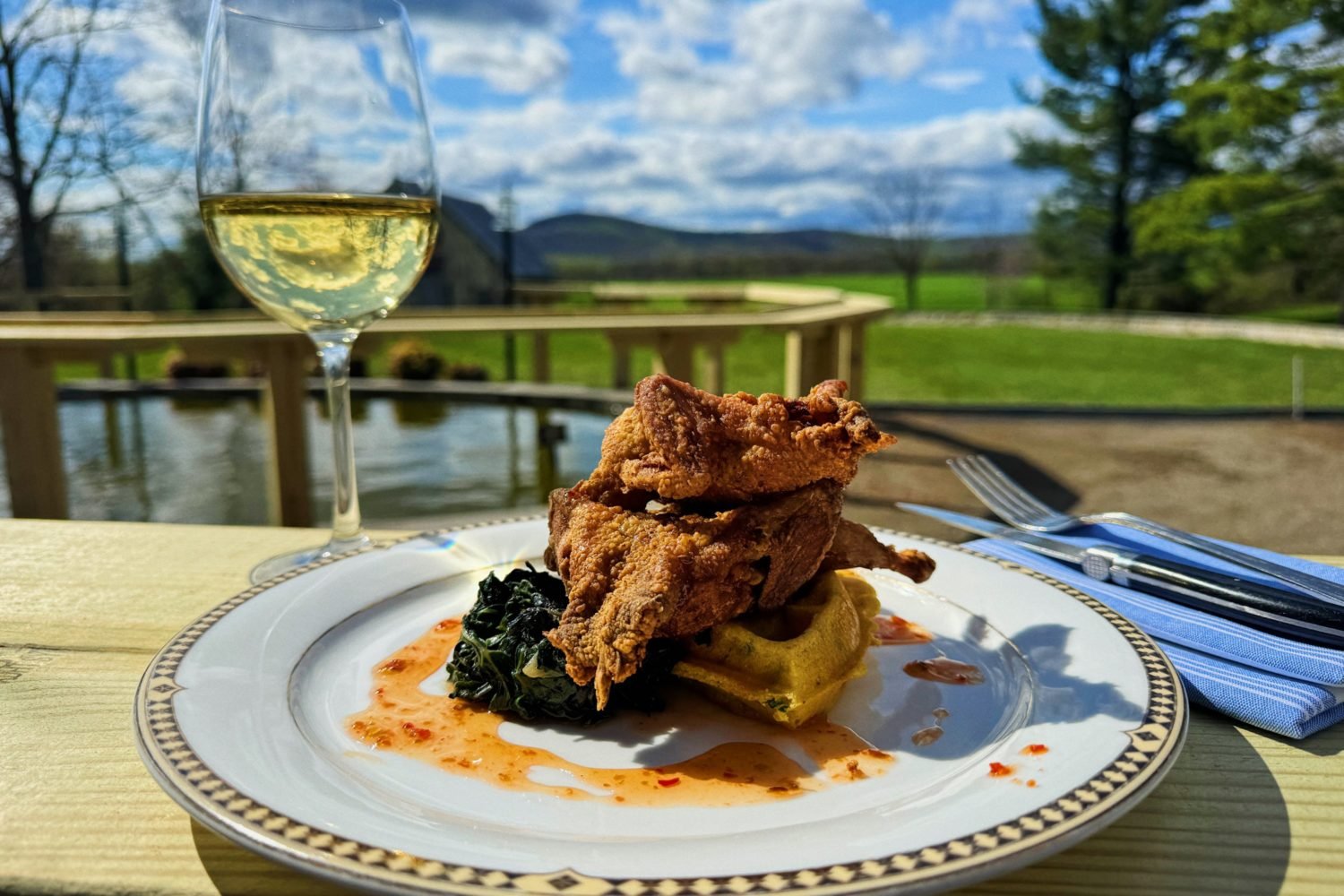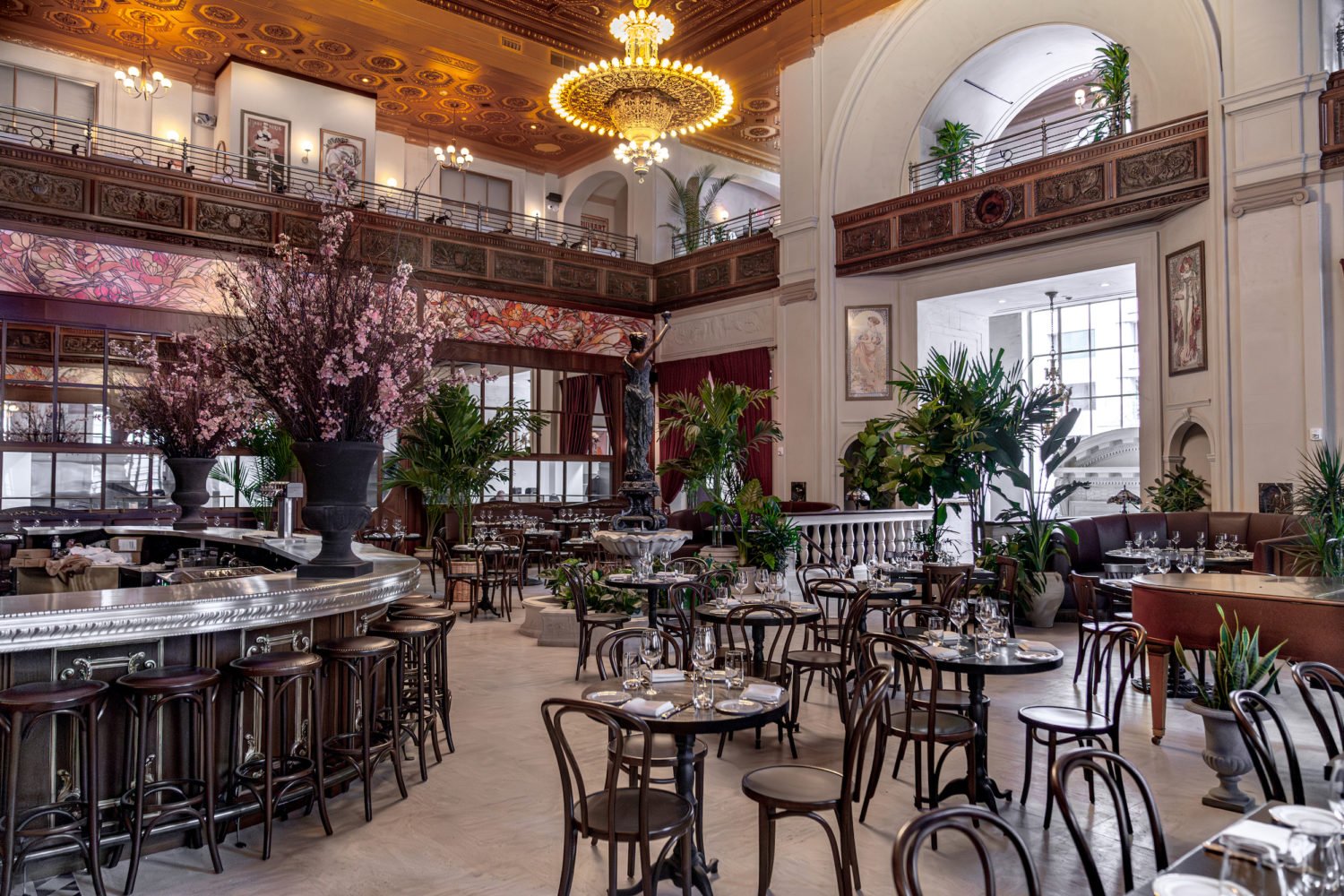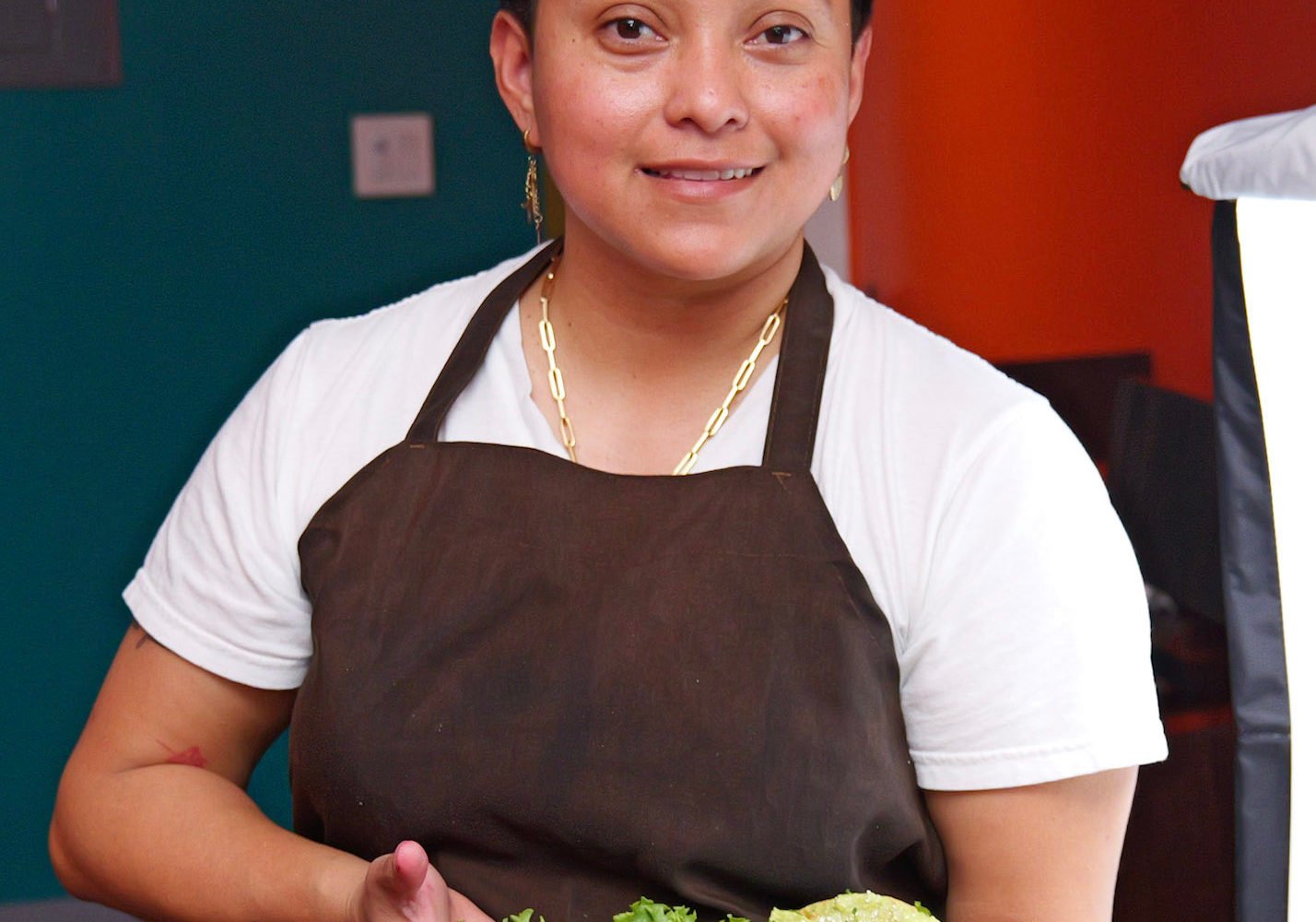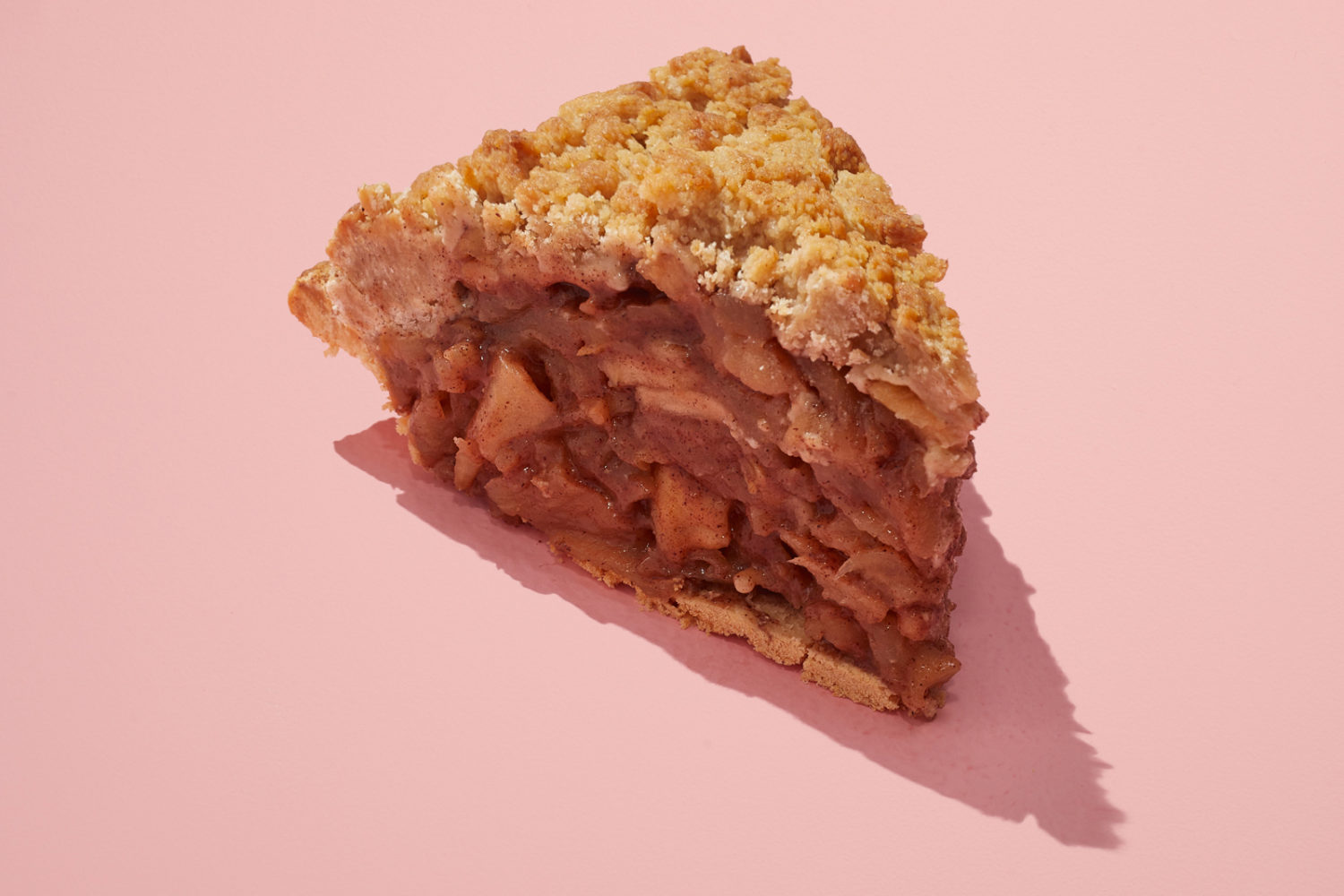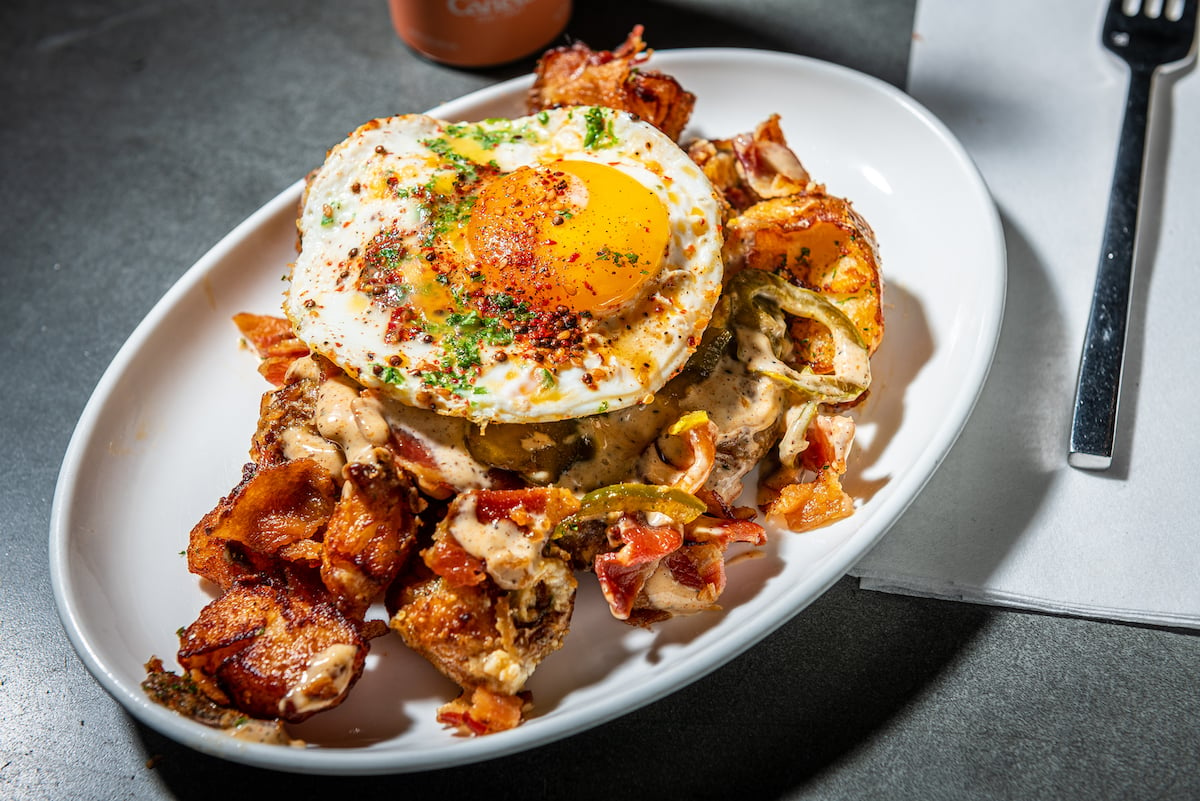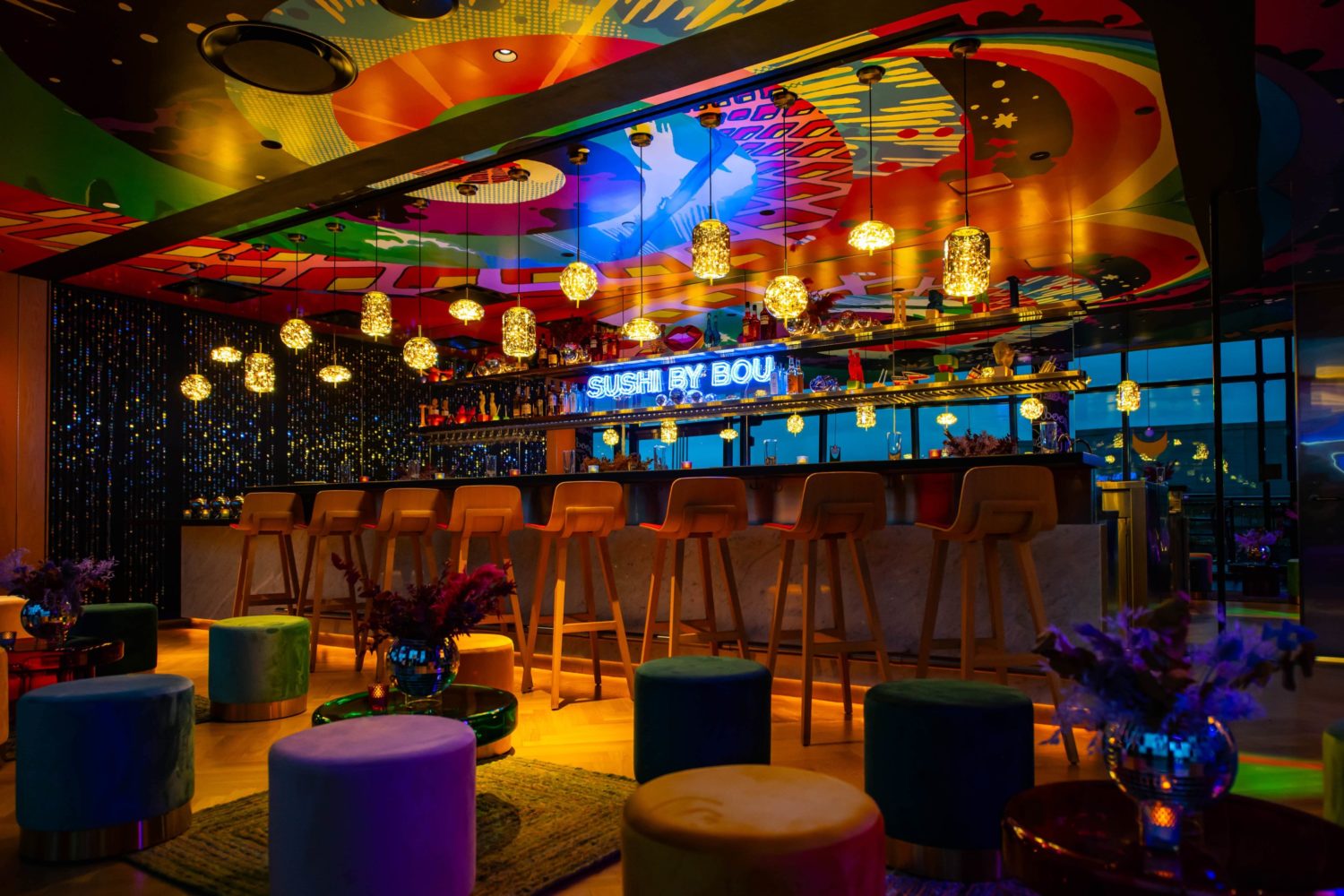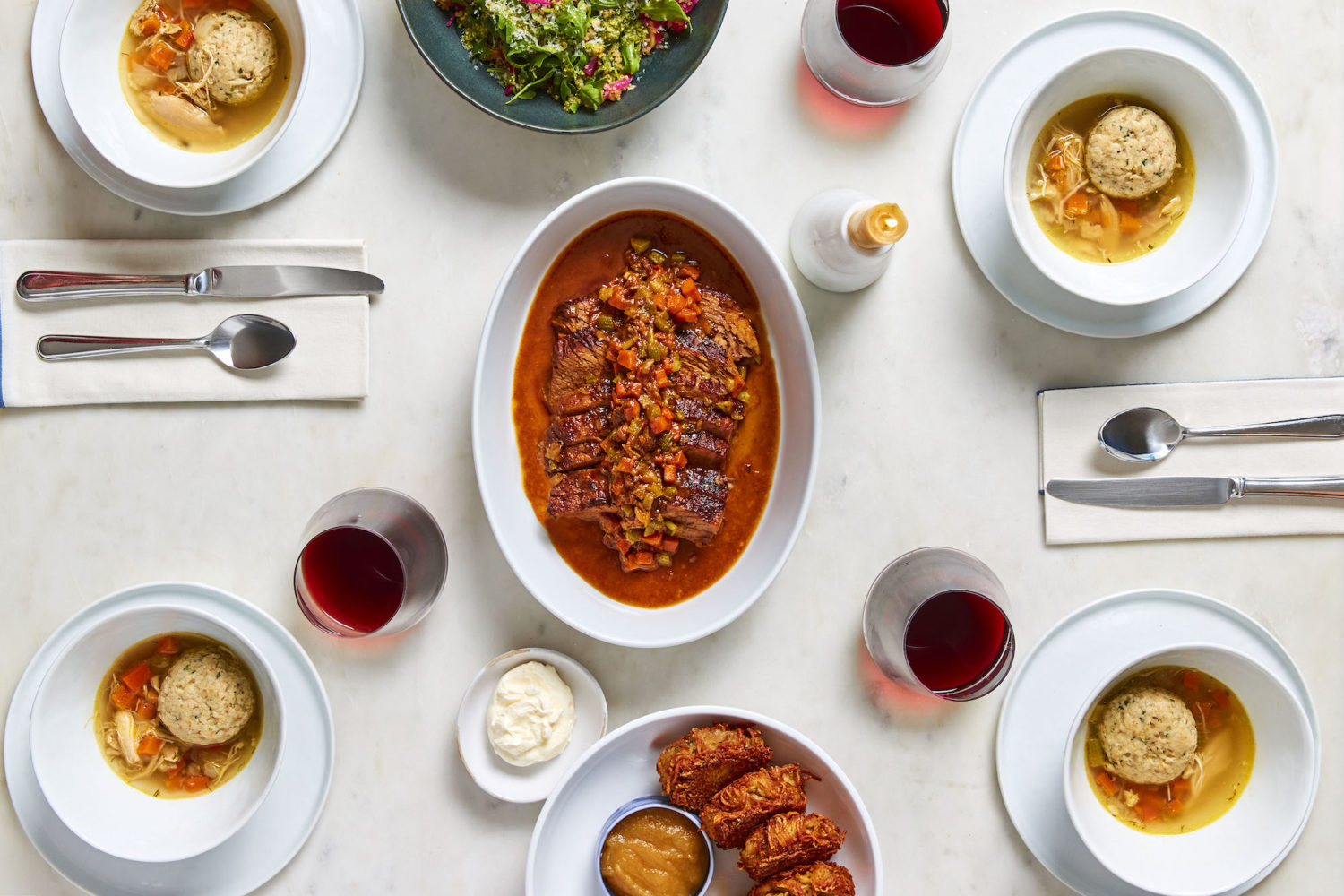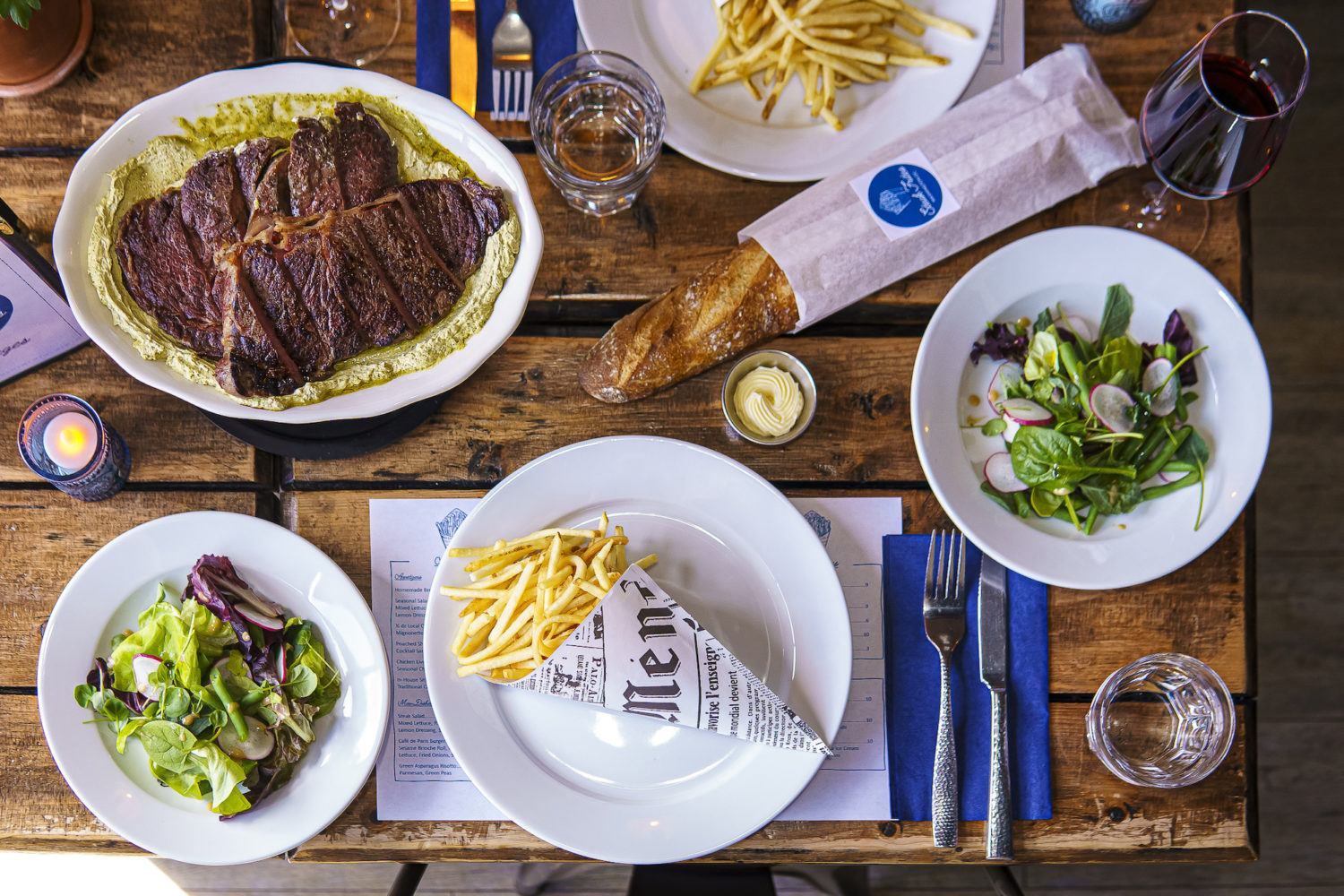
The term “bistro” was adopted by French restaurateurs after the Napoleonic wars, then embraced and canonized, all within about a generation. The word became synonymous with an entire school of cooking and seemed to express a particularly French attitude toward life—one of languorous, carefree indulgence. Today the idea of a restaurant that dispenses with frills in favor of casual, unpretentious food served with speed isn’t the only connotation “bistro” carries. It may not even be the primary one.
In Washington, the term has become the default for describing virtually any restaurant that opens. There are places that use the term but don’t follow through on the message (the elegant Bistro Bis) and places that lower expectations for the out-of-town-celebrity-chef vehicle (Westend Bistro by Eric Ripert). Some bistros aim to reposition an unsexy cuisine (the Middle Eastern–themed Tabaq Bistro), while others attempt to woo an upscale clientele (the excellent Jesse Wong’s AseanBistro in Columbia). The latest trend is the gastrobistro, which is closer to being a traditional bistro than any of those examples but can’t quite bring itself to embrace the term—as if “bistro” itself weren’t quite enough.
What’s wrong with the traditional bistro? you might ask. The owners of the five-month-old Bistro Cacao must have asked themselves the same thing, because they’ve spurned the notion that a bistro is an endlessly malleable concept, to be bent according to the needs or whims of the chef or owner.
To enter this Capitol Hill townhouse is to step back in time: bordello-red curtains, antique table lamps, and grandmotherly wing chairs.
“I feel like I’m in a French whorehouse,” whispered my friend as we settled in.
“Yes,” I whispered back, “but a very quaint and classy one.”
The previous tenant was the legendary if gastronomically underwhelming Two Quail, a haunt of politicos and lobbyists for transacting business and, less well known, a place for wooing a person who was not one’s spouse. The redone space preserves that air of seclusion. On most nights, the room is full of couples in varying degrees of commitment, taking their time over glasses of Pinot Blanc and enjoying the policy of the staff not to intrude. In an age when restaurants tout their interior-design teams and seem intent on proving themselves slicker or sassier than their competitors, Cacao is an anomaly. It doesn’t look designed; it looks thrown together—an agglomeration of wine bottles, French advertisements, and mismatched furniture. Even the soundtrack has a bric-a-brac quality, jumping from Édith Piaf to Johnny Mathis to Duke Ellington.
And yet restaurateurs and designers would do well to take note of Bistro Cacao’s artless charm: I can’t remember the last time I saw so many people smiling at dinner.
The slick, noisy restaurant that sometimes seems to dominate Washington’s dining scene is essentially a chilly experience. It asks you to meet it on its own terms—“Have you dined with us before? May I explain how our menu works?” Cacao asks nothing. You sink into it as you would an old comforter.
Chef Kemal Deger’s menu is so old-school it might have been scrawled on parchment. It pays no mind to seasonality (rack of lamb, a winter warhorse, looks to be a mainstay) or locality (no nearby farm receives mention), and it offers no winking twists on tradition. The saucing, at a time when French chefs have turned to oils and emulsions to lighten their cuisine, leans—sometimes heavily—toward reductions and fondues. One of the soups on a warm spring day was lobster bisque.
Deger apprenticed under the legendary Jean-Louis Palladin and Yannick Cam and comes to Cacao most recently from Le Tire Bouchon in Fairfax, where his dishes evinced more finish and flourish. Here he has downscaled his ambitions, affirming the bistro’s original mission as a place not of grand culinary statements but of modest pleasures. And at modest prices.
His meatloaf-thick slice of pâté is anything but the virtuosic display that a generation of charcuterie-loving chefs have led us to expect, but it’s rewarding: coarse-textured, studded with pistachios, and nicely spiced. Likewise, the last time I saw frogs’ legs on a local menu, a chef had put them in the role of Buffalo wings. Deger prepares them canonically, blitzing them with minced garlic and giving them a vibrant swirl of parsley sauce.
Similarly, what made the hanger steak so good one night wasn’t the quality of the meat but the attention lavished on its simple preparation. A good, coarse crust of salt and pepper made for a strong textural contrast with the rosy-hued meat and obviated the need for the accompanying cup of Dijon. The matchstick fries were treated to fresh oil and fried to a clean, greaseless turn.
Innovation can be exciting. But there’s a lot to be said for technical excellence, for the simple thing done quietly right. No dish typifies this ideal better than the rack of lamb. It comes with a coating of bread crumbs and mustard and a side of roasted potatoes and asparagus. Nothing unexpected, nothing that nudges you to see an old dish in a fresh light. But slicing into the center of the chops reveals the hoped-for crimson hue, the mustard crumb topping is a subtly pungent accent to the strong-tasting meat, and the potatoes and asparagus are perfect.
The surprise isn’t in the preparation but in the price—$21.95, or about $10 to $12 less than you can expect to pay elsewhere for two four-bone racks. A starter of scallops ($9.95) is nearly as good a deal. Pan-seared until their tops resemble bronze coins and set atop a creamy gratin of fennel, the scallops come three to an order at a time when the fashion is to repackage a single fat one into three thin slices of crudo or dice it into a tartare.
The same frugality extends to the wine list. None of the selections by the glass is memorable, but most are good matches with the cooking, and all are under $10.
How does Cacao do it? Limiting the number of parts to each dish—sauces and reductions are kept to a minimum—reduces the number of cooks needed in the kitchen, while putting a premium on technical mastery rather than on sourcing cuts down on overhead. And narrowing the scope of the menu makes it easier to achieve consistency.
Another bargain-minded bistro on Capitol Hill, Montmartre, has employed this strategy to great success. Not coincidentally, Cacao’s general manager, the dashing Veronique Onteniente, is a veteran of Montmartre. As she did there, she presides over the space with authority—the in-command but unfailingly gracious hostess of a dinner party.
“Please come see us again,” she said to my friend and me as we departed, smiling and waving with a poise that suggested a cross between the First Lady and a runway model.
There are restaurants that are less than the sum of their parts, including some otherwise delicious destinations. And then there are restaurants that are greater than the sum of their parts. Cacao is among the latter. You won’t remember any dish a week later, and you’re not going to go hunting down the name of the wine you sipped. But the memory of a good time—of a warm welcome, of solid, well-prepared food at reasonable prices, of a transporting mood, of a staff that encourages you to linger—is likely to stay with you.
Fickle foodies may not be enticed, and Cacao isn’t going to stir the im
agination of anyone looking for the next new scene, but for some of us there’s a lot in these old-school values—enduring bistro values—to be savored.






